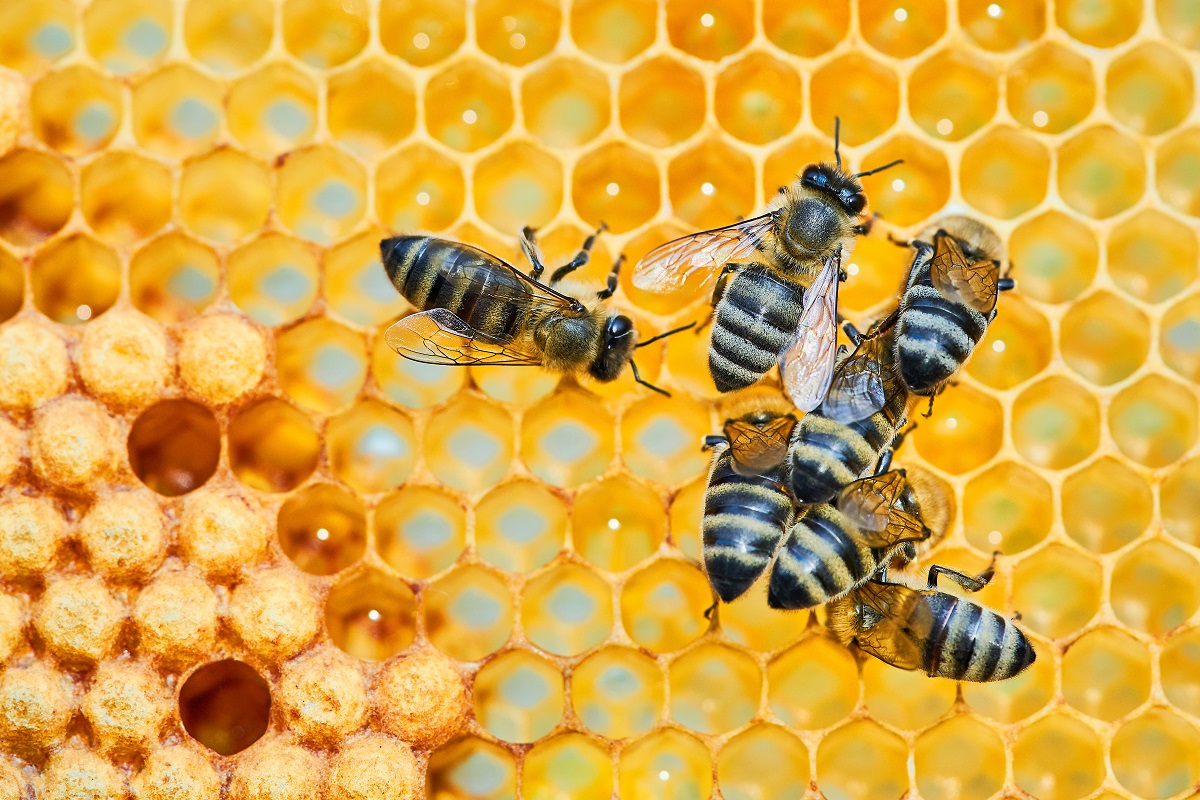
How Bees Make Their Hives According to Bee and Wasp Removal Experts
Have you ever seen a swarm of bees in your yard and wondered how it got there? Bee and wasp removal experts will tell you exactly where it came from and how to deal with the situation. Beehives are actually much more complex than we might think. Hives are more than just a hollow tree where bees choose to reside. They are structured shelters designed by the bees themselves and can fit their entire colony.
What is a Beehive?
A beehive is actually the structure that holds a constructed bee nest such as wood, pottery or straw. Inside the structure, there is an abundance of cells shaped like hexagons that are made out of honeycomb and a substance called propolis. Bees collect the propolis from tree buds, and use it to build the hive and fill cracks or other imperfections that are in the honeycomb. Propolis is also used to disinfect the bees’ legs at the entrance of the hive, before they enter. This will ensure that the bees don’t bring in any microbes that could potentially harm the hive. Propolis is also used to preserve the corpses of other insects or predators who have invaded the hive. Oftentimes an insect’s body is too difficult for the bees to remove from the hive, so putting propolis on the body will preserve its corpse and prevent it from decaying. If a foreign insect’s body decayed in the hive, it could put the entire colony under serious health risks.
Bees also store their resources and food inside the hive, such as honey and pollen that comes from flowers. They also store the Queen’s offspring in eggs and larvae. While hives are important to a colony’s survival, they can also be harmful to humans if they are built in human territory. If your safety is at risk from a hive, make sure you call bee and wasp exterminators to have the hive removed.
How is the Hive Made?
Beehives are built around honey production which is one of the most important parts of any hive. Six-sided hexagonal tubes are used to build the hive because they provide the most efficient way to produce and transport honey. While most hives are built this way, the location of the hive is also very important. A hive built in the open air would not be suitable for living, and a hive built where it is too hot would melt some of the resources bees use for construction. Bees are smart enough to choose a location that will completely protect the hive from elements like nature and weather.
Bees construct the hive from top to bottom by first putting a layer of propolis all over the walls. These walls can hold up to thirty times the weight of the hive. Propolis is also used by the bees at multiple stages of production, so they always have it handy. Bees then will create their storage substance by taking wax that has been chewed by the bees so it becomes soft, and store pollen, eggs, honey, water, nectar, and larvae inside. The hive will have a structure of cells where the queen’s cells are at the bottom, worker brood and drone bee cells are in the middle, and pollen cells are at the top. Once the hive is completely built, it should be sustained for several years.
Beehives are incredibly complex systems of honey production and can seem quite fascinating to humans. However, if beehives are built in your yard, or too close to your property and create a safety risk, be sure to consult a bee and wasp removal expert to safely handle the hive for you.